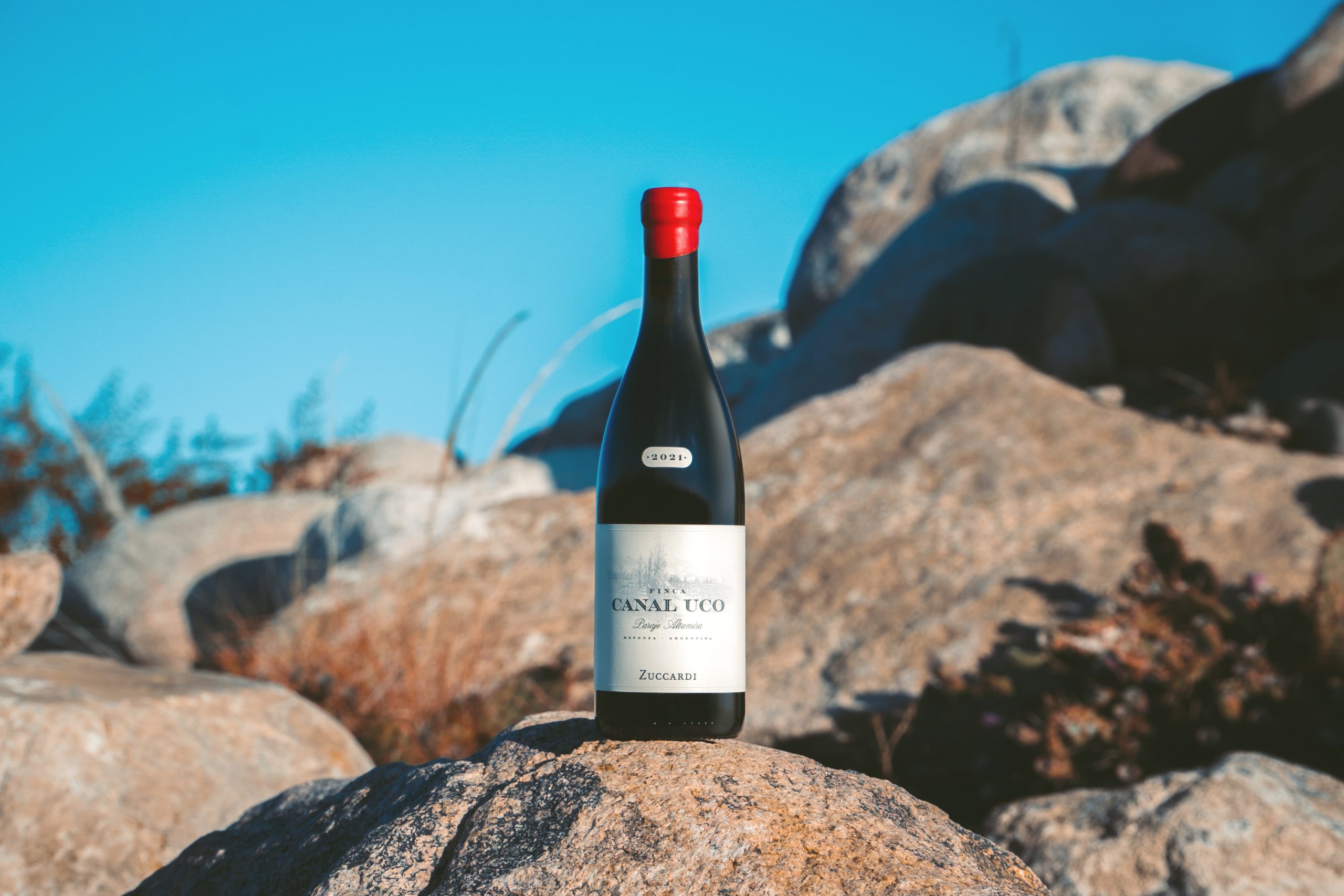Heroes or villains? – Brands Debate
Wine brands are celebrated as a commercial saviour and vilified for dumbing down the beauty and variety of all that is vinous. The latest debate failed to sway any of the participants from their strongly held positions
It seems a long time since the brand debate surfaced as an open discussion. Surely brands are an inevitability in the wine category these days: the quality is sufficiently good, the packaging honed and slick – brands are the future. Or perhaps not? There are still members of the trade who believe that brands are not an inevitability, nor are they necessarily good for the wine category or the consumer. Such was the lively discussion on brands that sparked up in the Mentzendorff boardroom in April.
Daniel Illsley, proprietor of Theatre of Wine in Greenwich, started off the discussion. “Before we start, I think that it would be a good idea to define what a brand really is. For me it’s a commodity wine sold on discount.†Andrew Hawes, Mentzendorff’s managing director, immediately chipped in, “Not necessarily. The definition of brands for us is very broad. In their original incarnation, brands essentially were the mark on a product that defined added value and possessed definite consumer equity.†“But,†retorted Illsley, “in vinous terms a brand can also be a place, and some of the brands out there are definitely devaluing the wine category.â€
Sarah Jane Evans, freelance journalist and former wine editor of BBC Good Food magazine, interjected here, “If you think about it, a brand in the consumer’s mind represents a definition of trust, integrity and consistency. In that way, you can say that Domaine Romanée-Conti is a brand just as much as Jacob’s Creek is one. One is very much associated with where it is produced, the other has not necessarily been so until now – though if you look at Jacob’s Creek’s new campaign, it stresses the provenance of the wine, the fact that it does indeed come from a place with a creek. So they are using both the place and the brand to strengthen consumer equity.â€
Up the creek?
“Jacob’s Creek might have a real creek, but does the wine really come from there?†questioned Illsley. “I don’t really think so. It’s wine that is created by a winemaker in an office sourcing wine from across various regions. Ultimately that is deceiving the consumer.â€
“But millions of Jacob’s Creek consumers don’t really care about that. Wines represent signposts
for them, helping them make their selection,†interjected Liz Aked, wine buyer at Spar. “Consumers don’t really care about the provenance – it just needs to taste good and fit their price point. It’s not so touchy-feely.â€
Consistency is a good thing
“Wine is a very different category to food or any other FMCG product – it is not really a truly branded sector,†commented Evans. “The only real similarity is that a good brand, as in any category, can extend and grow if the consumer perceives a certain amount of security with that brand.†Rod Smith, French wine manager at Mentzendorff, agreed: “Brand consistency is the most important factor for consumers. Consistency is not a bad thing if consumers know what they are getting.â€
“It’s not a matter of being bad,†insisted Illsley, “but what good is it doing for the consumer if ultimately it is misleading them about the true provenance of the wine?†“The fact remains,†commented Hawes, “that brands come about because they were the best of their type, they grew out of the barrel, a bin or a particular mark on the barrel – Fonseca Bin 27, for example. This concept still remains true today. The secret now is to ensure that the brand management is such that you successfully retain that image and therefore the consumer’s loyalty.†“That may be so,†said Illsley. “However, consumer loyalty is not retained when wines are continually being discounted so deeply that all perception of quality and loyalty
is eroded.â€
Better deal
“The fact that 80% of brands are on promotion 80% of the time is a commercial reality in today’s market. You could argue just as easily that the consumer is getting a better deal because, in comparison to 15 years ago, the wines are now consistently better quality and the price has not really risen, comparatively speaking,†said Aked. “Brands may not be exciting in pure vinous terms sometimes, but they do work. Look at Jacob’s Creek, it has consistently retained higher price points, and its market share must prove that it has quite a high level of consumer loyalty.â€
“I agree that a brand wouldn’t exist without sales,†nodded Smith, “and there is a tangible layer of quality perception with all of the leading brands in the UK at the moment. Consumers are not easily fooled. None of the brands that dominate the top 10 in the UK today would be there if they did not have a certain amount of perceived quality in the consumer’s mind.â€
On-trade foibles
“Brands, whether wine or otherwise, have to be promoted in some way, either by advertising, price promotion or PR, to retain visibility,†opined Steve Kirkham, sommelier at Aurora, at the Great Eastern Hotel. “The problem is that sometimes, especially in an on-trade context, these factors can be off-putting when it comes to listing a wine. The other negative for brands on restaurant lists is the price differential. However, if a branded wine is good and fits with the style of the food being served in the establishment, then it’s not going to stop a sommelier from listing it, in my opinion.â€
Partner Content
“But my point is that they all look alike, they have no real USP, no regional or varietal variation,†stated Illsley. “Wine is an extension of our cultural lives, and brands dumb this fascinating aspect down.†Aked interrupted: “That may be so, but those wines that are niche and ‘fascinating’ are a very small percentage of the total market.†“Yes, and the majority of wine is sold at £3.89,†stated Smith. “That is the sector of the market that keeps the category alive.â€
Smith then cited an example from another industry. “Most days I wake up and have a cup of tea. I don’t care about the niche, hand-picked, low-yield speciality tea from the low-lying slopes of the Punjab. I have my three preferred brands, and that’s it. No doubt there are tea specialists sitting in a room like this somewhere debating the very same issues facing the branded tea market, but the truth is the average tea consumer like me couldn’t care less. A brand, in whatever category, takes away the dilemma of having to have knowledge in order to make a choice. Plus, it adds quality assurance into the equation.â€
“According to some research I read a couple of years ago, if you give consumers 10 toothpastes to choose from, they will happily shop,†stated Evans. “However, if you give them 20, they have problems choosing, and in many cases they walk away without buying any toothpaste at all.â€
“When it comes to choice, the market is saturated,†commented Aked. “Concentration of choice in the wine aisles is needed. It is happening, but we will never see just 10 brands on a wine aisle.â€
“That may be so, but consolidation in the category means that polarisation is occurring,†argued Hawes. “What we face is overall share continuing to be concentrated at the lower end of the market. This will create opportunities for independents
to offer more and more at the
top end, however. The reality is that supermarkets won’t buy from smaller producers. As a result, brands become dominant in that sector, which does not mean that quality will deteriorate.â€
Bright future?
And so the discussion turned to the future of brands in the UK and what defines a successful brand. “The future is more polarisation,†commented Smith. “Brands are forced to consolidate their offer as they push to make the consumer’s decision easier and quicker in the wine aisle.â€
“This, of course, will not be the case in the on-trade,†stated Kirkham. “The way forward here will be exclusivity and emphasising a point of difference from the retail environment. This is great because it is the perfect way
to encourage experimentation through recommendation.â€
“Brands will continue to grow in importance in their role of bringing new consumers into the category,†said Smith. “Yes, and, as a result,†contested Illsley, “the quality will continue to go down and consumers will be increasingly turned away from the product.†db May 2006
The Panel
Liz Aked, wine buyer, Spar
Sarah Jane Evans, consultant and journalist
Andrew Hawes, managing director, Mentzendorff
Daniel Illsley, proprietor, Theatre of Wine, Greenwich
Steve Kirkham, sommelier, Aurora Great Eastern Hotel
Rod Smith, French wine manager, Mentzendorff




